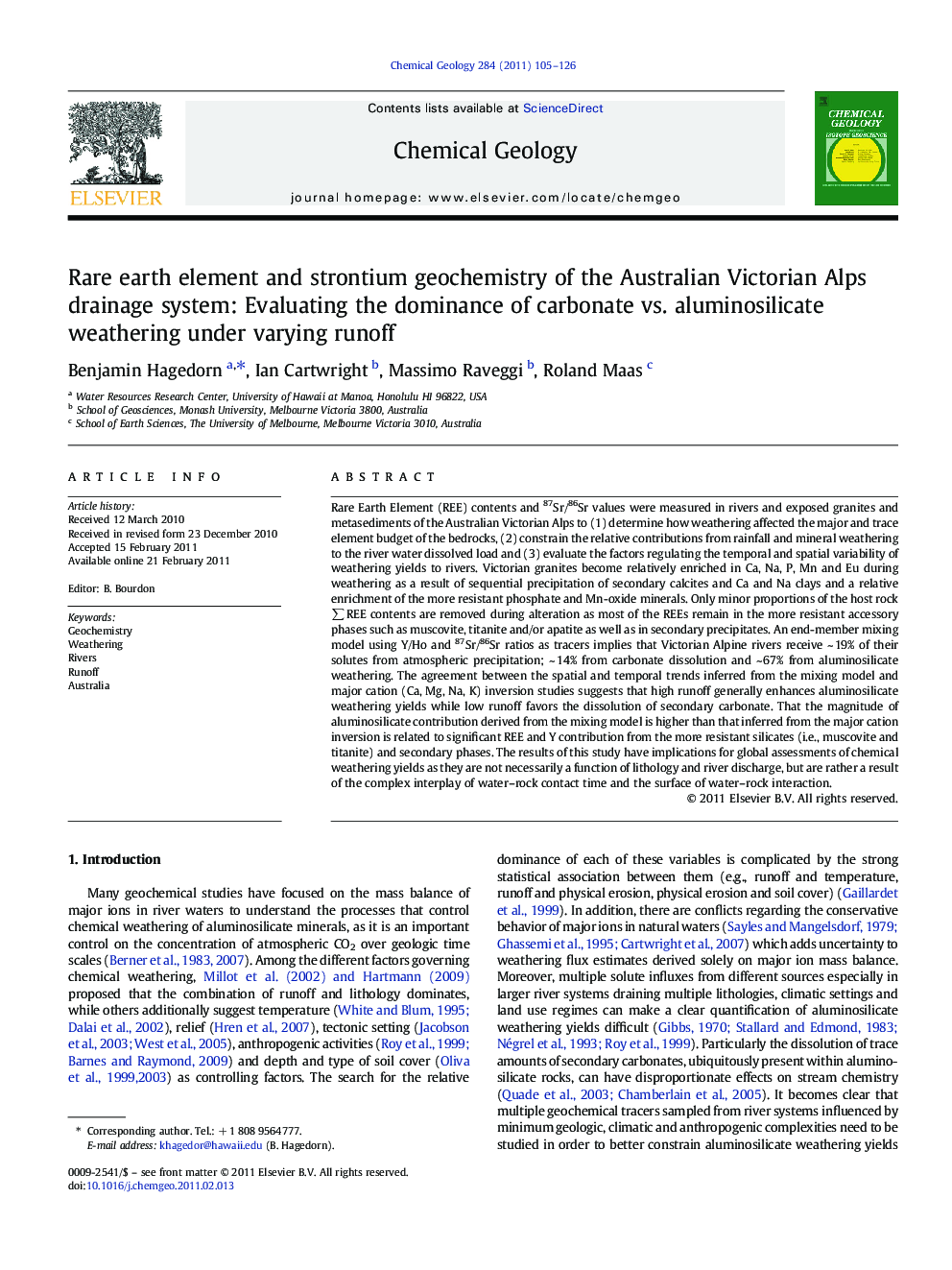| کد مقاله | کد نشریه | سال انتشار | مقاله انگلیسی | نسخه تمام متن |
|---|---|---|---|---|
| 4699722 | 1637668 | 2011 | 22 صفحه PDF | دانلود رایگان |

Rare Earth Element (REE) contents and 87Sr/86Sr values were measured in rivers and exposed granites and metasediments of the Australian Victorian Alps to (1) determine how weathering affected the major and trace element budget of the bedrocks, (2) constrain the relative contributions from rainfall and mineral weathering to the river water dissolved load and (3) evaluate the factors regulating the temporal and spatial variability of weathering yields to rivers. Victorian granites become relatively enriched in Ca, Na, P, Mn and Eu during weathering as a result of sequential precipitation of secondary calcites and Ca and Na clays and a relative enrichment of the more resistant phosphate and Mn-oxide minerals. Only minor proportions of the host rock ∑ REE contents are removed during alteration as most of the REEs remain in the more resistant accessory phases such as muscovite, titanite and/or apatite as well as in secondary precipitates. An end-member mixing model using Y/Ho and 87Sr/86Sr ratios as tracers implies that Victorian Alpine rivers receive ~ 19% of their solutes from atmospheric precipitation; ~ 14% from carbonate dissolution and ~ 67% from aluminosilicate weathering. The agreement between the spatial and temporal trends inferred from the mixing model and major cation (Ca, Mg, Na, K) inversion studies suggests that high runoff generally enhances aluminosilicate weathering yields while low runoff favors the dissolution of secondary carbonate. That the magnitude of aluminosilicate contribution derived from the mixing model is higher than that inferred from the major cation inversion is related to significant REE and Y contribution from the more resistant silicates (i.e., muscovite and titanite) and secondary phases. The results of this study have implications for global assessments of chemical weathering yields as they are not necessarily a function of lithology and river discharge, but are rather a result of the complex interplay of water–rock contact time and the surface of water–rock interaction.
► Recognize the mineralogical effects of weathering in granitoids
► Establish if conservative river water REE transport occurs
► Delineate solute contributions to rivers from a three end-member mixing model
► Discern factors governing temporal and spatial trends of weathering yields to rivers
Journal: Chemical Geology - Volume 284, Issues 1–2, 9 May 2011, Pages 105–126